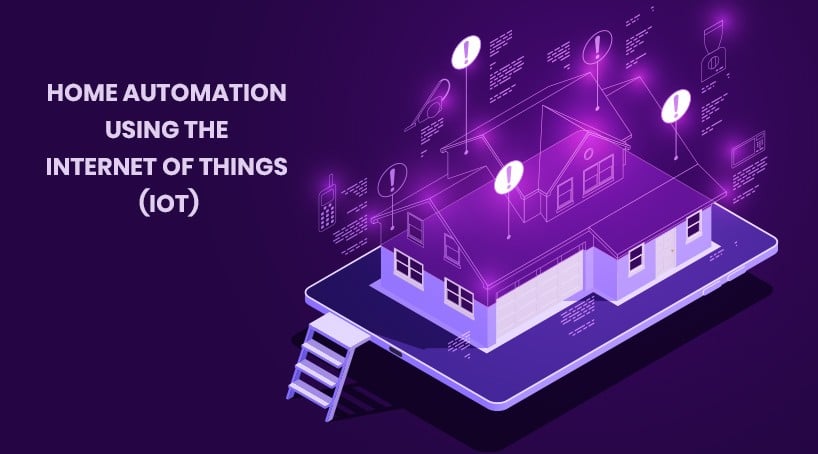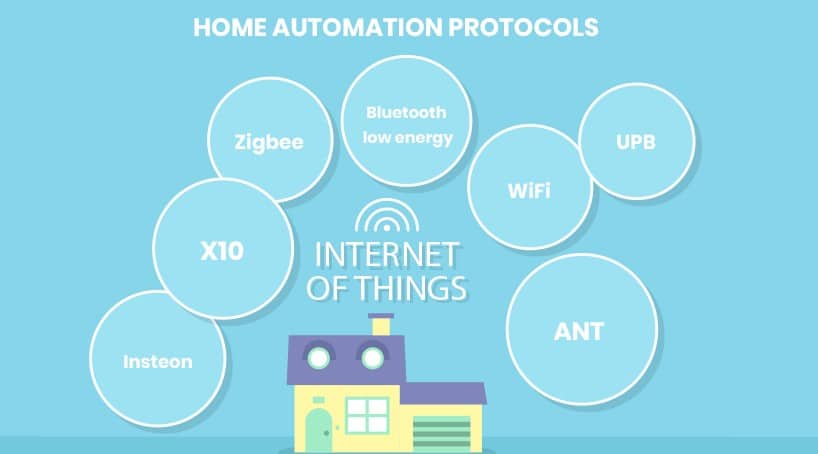- 5 min read
- Mar 3, 2022
- 0

IoT has already made a reputation for itself in the industrial sector as a revolutionizing technology that has the capacity to improve efficiency and automation. They have a great potential to revolutionize the consumer sector as well, and one of the ways the technology is doing it is through home automation. Home automation helps the home become “smart” and adjust according to your needs. It means greater comfort along with the benefits of cost savings. In this article, we will explore how IoT can help home automation
What is IoT? How can it help home automation?

It stands for the internet of things and is a technology that makes hardware connect to the internet, thereby granting access to various software to manipulate them. The hardware often have sensors and they help in effective communication between automatic algorithms and intelligent software.
Following are some applications of IoT for smart homes
- Automatic lighting
IoT allows rooms to recognize if a human enters the said room. One doesn’t need to switch on the lights manually every time
- Smart bathrooms
Smart bathrooms allow for intelligent temperature control, more water saving and in general a more pleasant experience than traditional bathrooms.
- Automatic temperature control
The IoT technology helps in automatically controlling the temperature in various areas of the home. Moreover, the temperature can be adjusted easily with the help of mobile apps.
- Security systems
The IoT technology is embedded with safety systems that notify you whenever someone tries to gain unauthorized access to your home. It also helps you prevent and escape fire hazards, leakages and things of that nature.
How IoT in home automation is designed
IoT in home automation is designed in three layers
- Hardware
- Software or applications
- Communication protocols
All of these layers are equally important and must be designed to be efficient. The software and hardware layer must especially be appealing to the user and the communication protocols must use as little power as possible and have lots of capabilities with a high degree of security.
IoT can be developed for home automation by using third-party hardware but specifically designed hardware is preferred. Any type of hardware can be used as part of the IoT home automation system, as long as it supports the communication protocol and is connected to the software that controls it. Special designed hardware have the ability to defend themselves against hacking in the case of IoT systems.
The protocol chosen is extremely important for good performance and extending the capabilities of the technology. Bad protocols often result in the restricting of device integration capabilities with sensors and IoT gateways.
Another important issue is related to the Firmware of the hardware chosen. The right firmware will help manage data transfer, perform data processing at the hardware level and manage the firmware OTA updates that are often needed.
Home automation protocols

One of the most important parts of creating a home automation system whether it be through an app development company or otherwise is to think about protocols it may use. A few years ago, GSM, WiFi and Bluetooth were the only options. However as they all required cellular SIM it became expensive. Bluetooth low energy or BLE became the evolved version of Bluetooth technology that helped phones become Middleware to fetch data from BLE sensors through the internet.
Following are a list of protocols that are used today for Home automation
- Bluetooth low energy: also called Bluetooth smart, it has mesh capabilities, encryption algorithms and more.
- Zigbee: low cost, low power radio frequency enabled protocol with mesh capabilities.
- X10: legacy protocol using wiring for signaling
- Insteon: communications are made both wirelessly and wired
- WiFi: this needs no explanation, it is one of the most popular protocols for Home IoT
- UPB: uses existing power cables to reduce cost
- ANT: an ultra-low power protocol helping developers build power-efficient sensors
There are many other options available, each with its own characteristics. The development of a successful home automation system through IoT requires the right protocols to be chosen
The opportunities for Businesses in Home automation IoT
There are many ways businesses can utilize the trend of IoT that is getting focused on Home automation. The area where this is most essential is in terms of security of the home automation system. This is because any system that is part of the IoT technology is targeted by malicious hackers all around the world. This is because unlike a computer that has few vulnerabilities, IoT systems can be attacked through the various devices that form a part of it.
Following are interesting areas in which businesses can help home automation IoT to increase their rate of success.
- Development of secure IoT platforms and lightweight security software that can support all connected IoT devices
- Developing dedicated hardware for IoT software, that is IoT application development and similar ventures
- Companies that provide processors and microchips can also find benefits in the field of home automation
Another important business niche that is going to definitely benefit from home automation is insurance. Installing smart devices and sensors can prevent damage from occurring. Gas leakages, fires and similar unwanted phenomena can be fixed before they even begin because of home automation using IoT technology. Thus insurance companies are already giving out discounts for those that have such technology in their homes.
Conclusion
As you can see, IoT technologies can prove very beneficial to the general public at large and there is a huge consumer market for businesses that plan on investing in the field.
Nextbrain is an application development company based in Toronto, Canada and is well suited for developing any kind of custom software for home automation. We have a special skill in developing mobile apps, and we also have in-house UX/UI developers that will create an attractive and easy-to-use interface for the software we develop. Contact us with your requirements if you have any type of software that you need for Home automation technology.

